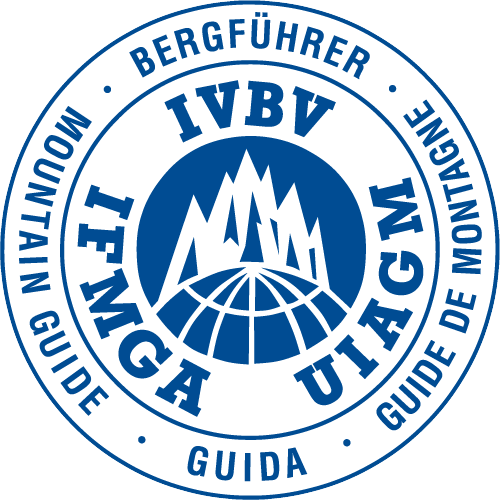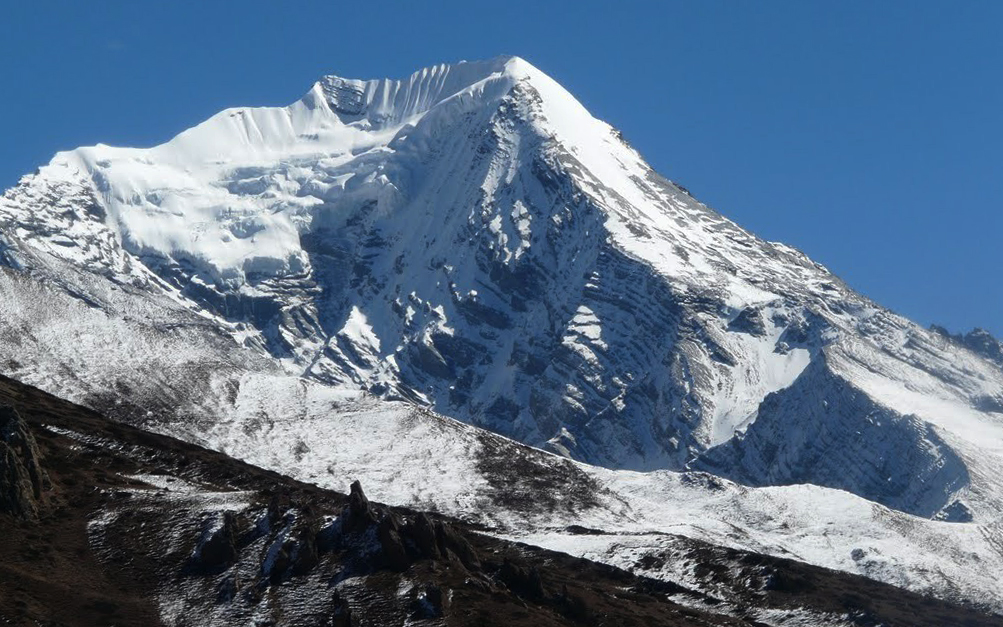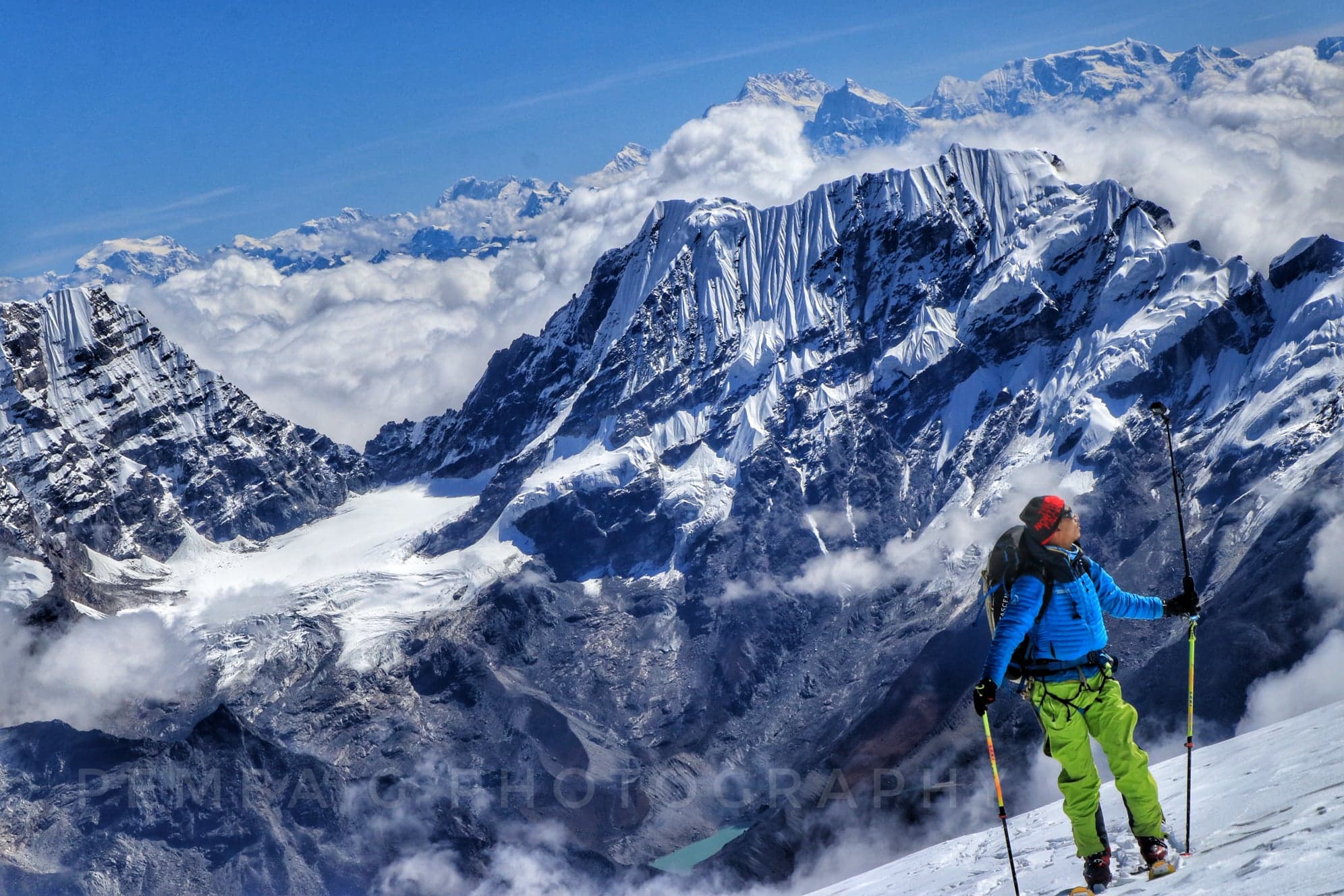

Our team is here to support you 24/7. Please feel free to provide your queries. You will get response within few minutes.




Pisang Peak Climbing involves trekking in the famous Annapurna region and summiting Pisang Peak. Additionally, we also visit Muktinath and trek in the beautiful Manang region of Nepal. Our 18-day journey begins in Kathmandu where we meet our climbing leaders/guides and fellow climbers. We drive to Dharapani the next day and begin trekking from there. We enjoy views of Annapurna, Tilicho and Gangapurna on our trek leading to Pisang Peak and summit the peak on the ninth day of our journey. The views of the Annapurna ranges, Dhaulagiri and other Himalayas from the top are magnificent. On our way back we follow the route that leads us to crossing Muktinath which is an important pilgrimage site for Nepalese people. We cross Thorong La Pass which is the highest mountain pass in the world to reach Muktinath. Our Pisang Peak itinerary also includes the beautiful Jomsom region which will be a worthwhile experience. From Jomsom, we fly to Pokhara and drive to Kathmandu from there, ending our amazing trip in Nepal.

18 Days Peak Climbing / (SKILL LEVEL: hard)
Day 01: Arrival at Kathmandu
We complete our custom formalities at the Tribhuwan International Airport in Kathmandu. Afterward, there is an Expedition High Mountain representative waiting for us at the gate who will take us to our hotel. We can then spend the rest of the day taking a rest. In the evening, we get to try Nepalese cuisine at a welcome dinner hosted by Expedition High Mountain.
Overnight: Kathmandu.
Included meals: Dinner
Day 02: Kathmandu (1300m/4264ft): trip preparation
Today is your free day in Kathmandu for the last-minute preparation for the Peak Climbing. We can also organize a full-day sightseeing tour with a private guide and private vehicle if you want.
Overnight: Kathmandu
Included meals: Breakfast
Day 03: Drive from Kathmandu to Dharapani (1,960m/6,430ft): 11-12 hours
We begin our drive to Dharapani after breakfast. It is a long journey via beautiful Nepalese townships. At the beginning of our trip, our trail is alongside the winding Trishuli River. We also pass through Pokhara, popularly known as the Lake City before reaching Dharapani which is one of the biggest villages in the Manang valley. Overnight at Dharapani.
Included meals: Breakfast Lunch Dinner
Day 04: Dharapani to Chame (2,710m/8,891ft): 5 – 6 hours
Today we negotiate a few steep forested ridges along with several landslides on route to Chame. We should not forget to look up though, as we will be greeted with remarkable views of Lamjung Himal, Annapurna II, and Annapurna IV (7,525m). We also come across small hot springs which should help us relax for a while. Overnight in Chame.
Included meals: Breakfast Lunch Dinner
Day 05: Chame to Upper Pisang (3,700m/12,136ft): 5-6hours
A narrow steep path through a very dense pine forest will bring us to a dramatic curved rock face, rising 1500m from the river. As the trail opens up, we will be surrounded by Himalayan peaks to Pisang. We ascend for around thirty minutes towards a big hill to reach Upper Pisang. Overnight in Upper Pisang.
Included meals: Breakfast Lunch Dinner
Day 06: Acclimatization
Today is set aside for acclimatization alone. Spending extra time at a high-altitude location will guarantee that we have a successful trip. We spend the whole day resting and exploring the village. Exploring the village and interacting with the locals will help us get a better glimpse of the local lifestyle. Throughout the day, the views of Annapurna, Gangapurna, and Tilicho are ours to marvel at. Overnight in Upper Pisang.
Included meals: Breakfast Lunch Dinner
Day 07: Upper Pisang to Pisang Peak Base Camp (4,380m/14,370ft): 4-5 hours
We begin our trek after breakfast towards the Pisang Base Camp. We ascend on a trail that passes through a thin forest and grasslands. The pasture is used for grazing yaks and is also the best place to set up our camp. The ground is flat and falls on a frequented trail. Overnight at the Pisang Peak Base Camp.
Included meals: Breakfast Lunch Dinner
Day 08: Pisang Peak Base Camp to High Camp (5,400m/17,712ft): 3-4 hours
We ascend on the south-west ridge and reach the high camp. After setting up our camp, we participate in basic climbing training. Our guides will provide training on peak climbing techniques and the proper ways of using climbing gears such as the ice axe, climbing boots, crampons, harnesses, ascenders, etc. The training will also include using ropes to go up and down. Although it is not mandatory to have prior training for Pisang Peak climbing, we strongly believe that some training experience will boost your confidence and climbing skills to increase the chances of scaling the summit as well as to fully enjoy the experience. Overnight at Pisang Peak High Camp.
Included meals: Breakfast Lunch Dinner
Day 09: Summit Pisang Peak and back to base camp (6,091m/19,980ft): 8-9 hours
We begin our trek early in the morning after breakfast. Today’s trail will be mostly on rocky surfaces. The peak is steep; therefore, there is not much snow. We will require around 20m of rope to climb on a ridge. Around the summit is around 70 degrees of slope which will require the usage of around 200m rope. Both fixed rope and main rope will be used. The views of the Annapurna range and others are extraordinary from the summit. We return to the base camp for an overnight stay.
Included meals: Breakfast Lunch Dinner
Day 10: Rest Day
This is a separate day reserved for any contingency. If we are not able to summit the Pisang Peak on the day as planned due to bad weather or any unforeseen event, this day can be used.
Included meals: Breakfast Lunch Dinner
Day 11: Pisang Peak Base Camp to Manang Valley (3,450m/11,316ft): 5-6 hours
From the base camp of Pisang Peak, we trek towards Pisang village. From Pisang, there are two routes to Manang. We chose the one that passes through Upper Pisang via Geru as it guarantees outstanding views of Mt. Annapurna, Pisang Peak, and others. As we walk near Manang the climate becomes more cold and dry. However, a short visit to Barge Monastery, the biggest monastery in the Manang District should cheer us up. Overnight at Manang.
Included meals: Breakfast Lunch Dinner
Day 12: Manang to Yak Kharka (4,110m/13,484ft): 3 – 4 hours
From Manang village, the trail crosses a stream, climbs to the village of Tenki above Manang, and then continues to climb out of the Marshyangdi Valley turning northwest up the valley of Jarsang Khola. The trail follows this valley northward, passing a few pastures, and a scrub of juniper trees, as it steadily gains elevation. The trail further passes near the small village of Ghunsa, a cluster of flat mud roofs just below the trailhead. Now the trail goes through meadows where horses and yaks graze. After crossing a small river on a wooden bridge, the trail passes an ancient Mani wall in a pleasant meadow and then reaches another small village of Yak Kharka. Small but gradual ascent is the key to avoiding altitude problems.
Included meals: Breakfast Lunch Dinner
Day 13: Yak kharka to Thorang Phedi: (4420m/14501ft): 3-4 hours
It is an uphill walk to Thorang Phedi. After walking for some time, we cross a suspension bridge and reach Ledar village. We ascend further and pass through towering cliffs before reaching Thorang Phedi, the last village before Thorong La. On this trip, we are rewarded with one of the best views of Mt. Gundang, Mt. Syagang, Thorung Peak, and Mt. Khatungkan. Overnight in Thorang Phedi.
Included meals: Breakfast Lunch Dinner
Day 14: Thorang Phedi to Thorong La (5416m/17764ft), continue trek to Muktinath (3,800/12,467ft): 9-10 hours
Crossing Thorong La pass, one of the highest passes in the world will be our ultimate objective today. We will be crossing the pass from east to west (Manang to Muktinath) which is the easiest and safest direction. We get up around three in the morning and walk up the mountain. When we finally made it to the top, we realized that our journey was worth it. We can take a few photos before heading to Muktinath Valley at the foot of the Thorong La pass. We continue trekking to Muktinath which is an important place of pilgrimage for both Hindus and Buddhists. Overnight in Muktinath.
Included meals: Breakfast Lunch Dinner
Day 15: Muktinath to Jomsom (2,715m/8,910ft): 5-6 hours
Muktinath is an important pilgrimage site for Buddhists and Hindus alike. In the morning, we tour the temple area and a Buddhist monastery located close to the temple. After the short tour, we continue our trek to Jomsom which is popular for its sweet apples and strong winds. There are even Nepalese songs that pay tribute to the strong gush of wind that blows in Jomsom around noon. After reaching Jomsom, we can visit its Ecological Museum which provides information on Jomsom’s rich culture as well as the flora and fauna that are native to the valley. Overnight in Jomsom.
Included meals: Breakfast Lunch Dinner
Day 16: Fly from Jomsom to Pokhara: 25 minutes
Today we fly to Pokhara, the lake city on the earliest possible airplane. After checking in at our hotel, we may take a rest or visit the lakeside area in the vicinity of the Fewa Lake. Here, we can indulge in buying some souvenirs or sampling some local delicacies. Overnight in Pokhara.
Included meals: Breakfast
Day 17: Drive from Pokhara to Kathmandu: 6 hours
After breakfast, we say goodbye to the beautiful lake city of Pokhara and drive towards Kathmandu. After reaching Kathmandu we have the rest of the day off. There will also be a farewell dinner hosted by Expedition High Mountain in the evening to celebrate the successful completion of our journey.
Included meals: Breakfast Dinner
Day 18: Final departure
Our adventure in Nepal comes to an end today! An Expedition High Mountain representative will escort us to the airport approximately 3 hours before our scheduled flight. On our way home, we have plenty of time to plan our next adventure in the wonderful country of Nepal.
Included meals: Breakfast